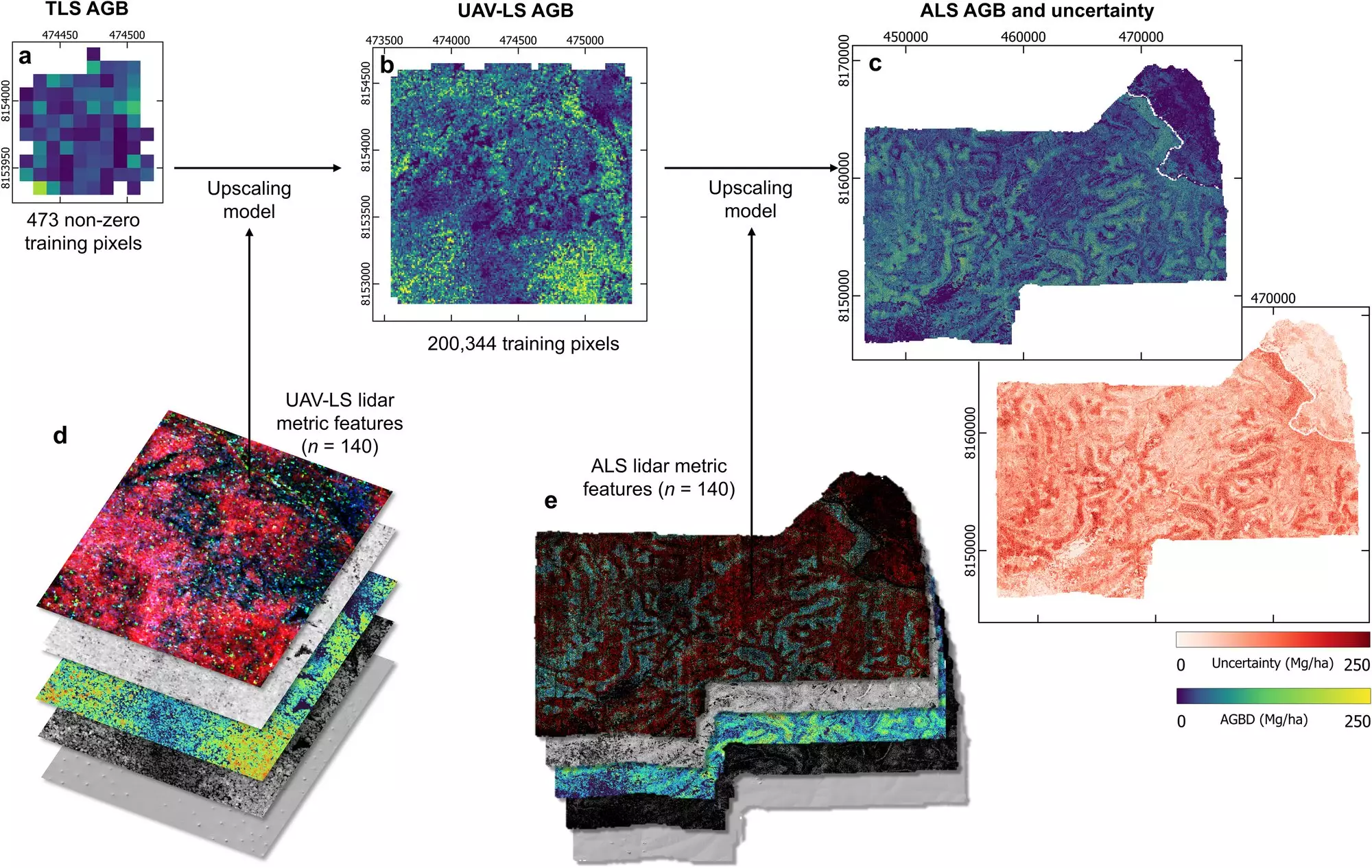Recent research has unveiled a startling revelation about the carbon-storing capabilities of Mozambique’s miombo woodlands. Conducted by a notable team of international scientists, including researchers from University College London (UCL) and led by the carbon data provider Sylvera, the study challenges the traditional methodologies used to estimate carbon storage in these vital ecosystems. It reveals that the miombo woodlands may hold up to 2.2 times more carbon than previously believed, thus bringing to light their critical importance in the ongoing battle against climate change.
For decades, traditional allometric equations—simple calculations based on tree measurements such as height and diameter—have been employed to gauge carbon stocks. However, this new groundbreaking research has employed advanced technology, including cutting-edge 3D laser scanning methods, to provide a more nuanced understanding of biomass in these forests. The revelations from this study signal a pivotal moment in ecological research, showing that miombo woodlands are not merely understudied but significantly underestimated in their global ecological impact.
Decoding the Miombo Ecosystem
Miombo woodlands, which stretch across vast areas of Sub-Saharan Africa, are not only significant for carbon capture but also form a complex tapestry of ecological, cultural, and social values. Home to flora and fauna that cannot be found elsewhere, these woodlands play an instrumental role in water regulation, climate stabilization, and providing sustenance to millions of inhabitants. Despite their immense ecological value, over the past 40 years, human activity has decimated these regions, reducing their expanse by nearly a million square kilometers.
Such loss is alarming, particularly when considering that the deforested area alone is three times larger than the landmass of the United Kingdom. Thus, ongoing monitoring and integrated conservation strategies have become more urgent than ever, laying the framework for responsible stewardship of these essential ecosystems.
The Role of Modern Technology in Ecological Monitoring
The recent research effort included unprecedented data collection, which encompassed 450 billion 3D measurements obtained from over 8 million individual trees across 500 square kilometers within Gilé National Park, Mozambique. By utilizing drone and helicopter-based laser scans, the research team was able to capture data across various woodland structures, from intact to degraded environments. This innovative approach not only provided a more accurate estimate of the biomass but also emphasized a crucial turning point in how we can leverage technology to understand our natural world.
Professor Mat Disney from UCL highlighted that these advancements mark the first instance of region-scale estimates of forest carbon being calculated independent of traditional allometric methods. This breakthrough is not only significant in the academic realm but also provides a compelling argument for converting ecological data into actionable policy.
The Implications of Underestimated Carbon Stocks
The ramifications of the study are immense. Findings suggest that conventional methodologies could be underestimating miombo woodlands’ carbon stocks by an amount equivalent to the total increase of atmospheric carbon dioxide in a single year—a staggering figure that underscores the necessity for immediate action. The extrapolation of results indicates that these woodlands could potentially contain an additional 13.6 billion metric tons of carbon dioxide equivalent (Gt CO2e) in their aboveground biomass than earlier forecasts suggested.
This elevated understanding of carbon stocks not only emphasizes the pivotal role miombo woodlands play in climate change mitigation but also calls for governments, corporations, and financial institutions to re-evaluate their approach to forest conservation. If the potential for carbon sequestration in these woodlands is as great as the study indicates, a renewed focus on preservation and restoration could emerge as one of the most effective climate action pathways.
Moving Beyond Perception: Financial Investment in Nature-based Solutions
According to Allister Furey, CEO and Co-founder of Sylvera, addressing climate change fundamentally revolves around financial resource allocation. He emphasizes that confidence in investing in nature-based solutions must be bolstered through improved measurements and monitoring techniques. Many investors remain hesitant to fund projects connected to forest conservation, primarily due to a lack of precise data.
The research published in *Communications Earth & Environment* thus serves as not just a scientific discovery, but a call to action. With advanced measurements, there is now a clearer argument for directing investment towards the protection and rehabilitation of miombo woodlands. This aligns with the larger vision of achieving net-zero emissions and ensuring that financial flows support the natural carbon sinks that are essential for our planet’s health.
The intersection of advanced technology and ecological insight presents a compelling narrative for both researchers and investors alike. With the pressing threat of climate change only intensifying, now is the time to shift perceptions and attitudes towards the lasting value of these overlooked ecosystems. Data-driven strategies present an opportunity not just for ecological restoration, but for redefining how we understand our duty to Earth and its resources.


Leave a Reply